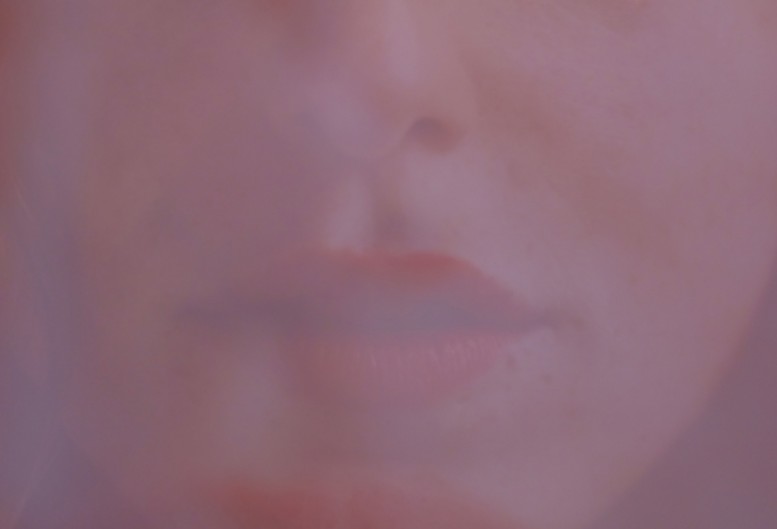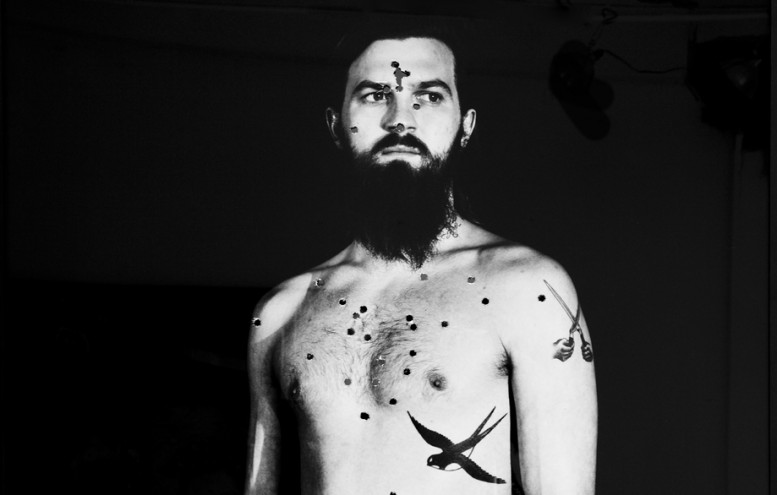Richie Culver: provocateur, bearded mystic raconteur, tattooed romantic, enigmatic rising contemporary British artist. Culver falls in line with some of the great rebels of creative expression that have made the United Kingdom a landscape of artistic rebellion for the past 40 years in contrast to its powdered wig, high tea, keep calm and carry on reputation. From the social dissatisfaction that gave birth to the punk movement, Vivienne Westwood, to the gothic angst of new wave, to Damien Hirst, to Tracey Emin, Culver is part of a cultural evolution of artists with extremely unique and inspiring ideas. Art has treated Culver well – almost as soon as he started exploring art as a career he was featured in a group show at the Tate Modern and now his list of collectors and demand for new work is growing exponentially. Culver was also recently invited by Eastpak to design a series of bags to support a charity alongside other artists such as The Smiths' Johnny Marr. Pas Un Autre contributor Christopher Lusher caught up with Richie Culver to chat about everything from the current state of the art world, his passion for music and the difficulties of living ones life as an artist. Lusher mentions, "It's only a matter of time before Culver catches fire stateside."
CHRISTOPHER LUSHER: Being an artist working in London what do you see as the differences in the contemporary art scene there as opposed to the one in the States?
RICHIE CULVER: There are many differences! London is very much stuck in a time warp, the 1990's. Its really sad to see. It depresses me in fact. We all know the artists in question. I'm not disrespecting them! (well not all of them) They are all old now, I'm not saying age makes a difference, cos it doesn't. Great art is great art but times are changing, musics changing, fashion is changing. The YBA's [Young British Artists] paved the way – but paved it for who exactly? The bigger major contemporary galleries seem scared to bring a new crop through & when they have attempted to do so have failed miserably. I personally am a fan of Damien Hirst ( hate me nor love me for that ) but I just like what he does, I like him as a person. He causes controversy what ever he does. He is a working class lad from Bristol done good, but in this country we love to slag the ones, the pioneers off once, they get to a certain level which is a shame. Hirst is Hirst, he does his thing. You have Coventry, Emin to name but a few. They are all just still doing their thing. Good luck to them I say but its 2012 now not 1993. (thank fuck) I'm not gonna divulge into Bacon etc. as I see there works in a totally different light....In America on the other hand the art world is scattered with really interesting people and works which translate into the modern world we live in. Also the curators are far more open minded and slightly more youthful, willing to take a chance of the likes of Dan Colen at the Gagosian Gallery. Dan is a fantastic painter & continues to do his thing. Once all that "Warhols Children" died down Dan continued to make strong work and shows. Scott Campbell for instance is another amazing young artist who is moving things forward. Of course you have the not so good artists such as Nate Lowman, whos work is neither here nor there. I'm sure he is s nice guy and all but his work strikes no chords for me. Agathe Snow is great. I'm not too clued up on Dash Snows work but I shall delve deeper. In a nut shell I see the NY scene as much more open to new ideas and the galleries & curators are much much more on the ball than over here in London. Their moving things in the right direction. London unfortunately is still stuck and wanking over pieces that were made over 20 years ago. LET GO FOR FUCKS SAKE! There are some realy cool artists & photographers living in London at the moment. To re cap ... Londons still in the ice age .. NY is daring to change the game and give young talented artists shows in historical galleries. The past is gone now. GONE.
LUSHER: Do you draw any inspiration from the young American art scene? If so, from who?
CULVER: I dont draw inspiration from anything but personal experiences. Being hung upside down from my ankles on the 34th floor was one of them....but back to young American artists, there's so many I hate (not personally)... I love as I said Scott Campbells work, always did even before we became mates. He is doing something totally different. My mate Jose Parla is doing his thing and such a lovely guy! Dan Colen is a great painter for sure! There used to be so many of them now I can only think of a few. Asger Carlsen is good. I'm not gonna even go into the street side of things. That's kinda joke at the moment. Even photographers, they're all way past their sell by date. It really is all in London now when it comes to artists / photographers under the age of 35 but they're not getting the scope they need. It's young and fresh. Like never before.
LUSHER: Do you find it difficult to earn a living as an artist?
CULVER: I was finding it hard for awhile but I now have a strong driven team behind me who all have the same vision I do. Since I had my Jesse Owens piece in the Tate Modern its all just fallen into place really quickly. My prices for my photography have rocketed so much its hard to keep up with. Same with my "I loved you" paintings!! It's unreal. I now only do a certain amount per year because the orders were getting silly. My main talent is painting. I've kinda kept that for last. I'm super excited for the world to see them. But no I don't find it hard anymore. I have a huge collectors list, ranging from musicians, art collectors, actors, government people and mates. As soon as word gets out I've finished a set of photos, collages or Polaroids etc. they have usually all sold which makes it hard to work towards the next show. I usually sneak off to my mates studio in the country side with no phone then hide them before they get hung. For whatever reason my work is in demand at the moment especially my photos, my collages and my "I loved you" painting. I'm bracing myself for my first collection of painting. That will be ready for next year though.
LUSHER: If you weren't involved in the arts what other career would you have chosen or has that ever been an option?
CULVER: If I were not an artist I'd probably be a stray street cat. Hustling and telling peeps I'm gonna be starting a band and stuff. Shoplifting, dead or in prison.
LUSHER: Describe your process. Is there any specific routine or is it more of a spontaneous action? How much forethought goes into your works?
CULVER: None. I get an idea and run with it down the street with a stolen TV in my hand.
LUSHER: Alot of your work has a relation to sports. What is the genesis for this or the ideas behind it?
CULVER: I love sport. Boxing. I love football too. I like bare knuckle fighting.
LUSHER: I know your a big music lover. What do you usually have playing in your flat or when you create? Any up and coming musicians we should know about?
CULVER: I'm listening to Death Grips new record, Charlie Parker, Kilo Kish, Joey Bada$$$, Capital Steez , Fila Brazillia , Bullet Nuts, Das Racist, Gil Scot Heron, Boldy James, Mr Muthafuck Esquire ,Waka Flokka, Danny Brown, ( shout out to my good mates now) - Eliot Sumner, Adele, Paloma Faith, Hurts,The Macabees,Tribes, Liam Bailey, Jack Penate, Jai Paul, The Weeknd, GG Allin, Miles Davis etc.
LUSHER: Whats lined up for the future for you project and gallery wise?
CULVER: So much. Shows in LA, NY, two shows in London, Berlin, Oslo, Rome, Barcelona. There's loads more but I can't remember! Thanks for having me! Fo real...
You can follow Richie Culver at his website. Text by Christopher Lusherfor Pas Un Autre.




















